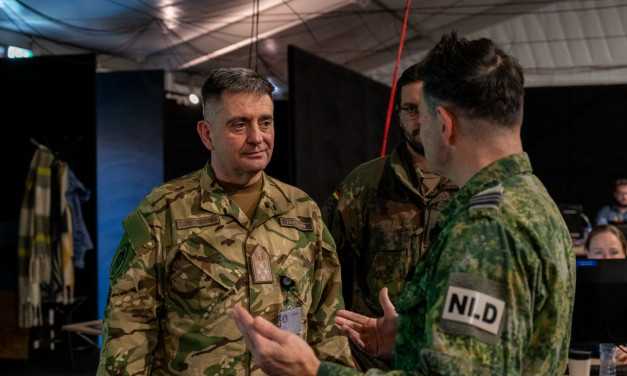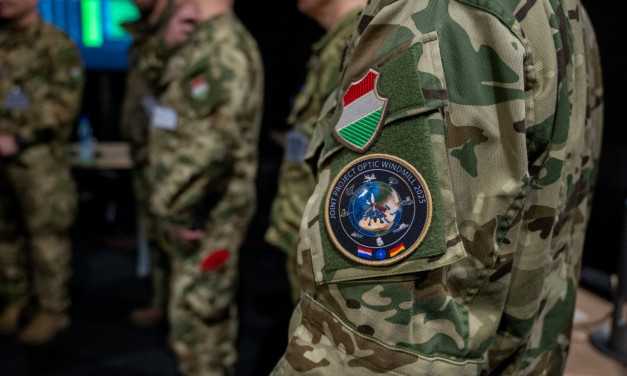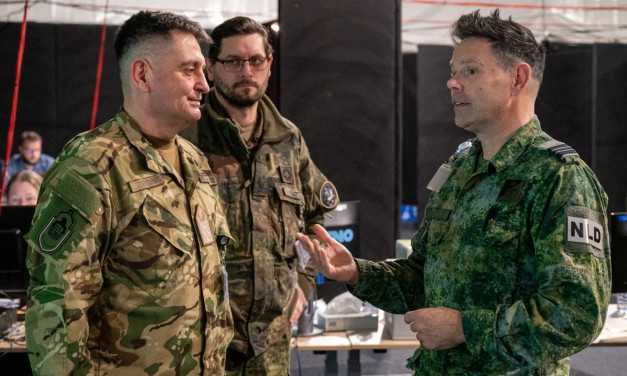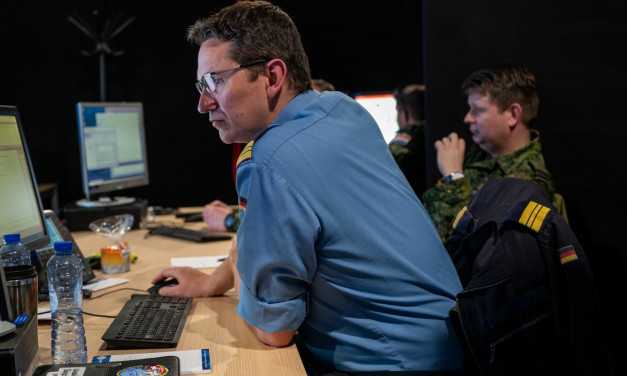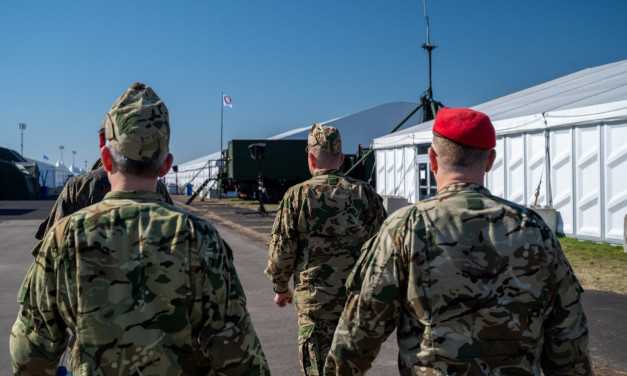Hungarian air defence artillerymen at NATO’s Largest Air Defence Exercise
Text: HDF Defence Staff | Photo: Royal Netherlands Army | 17:15 March 24, 2025In the midst of current security challenges, it is vital that Hungary be able to conduct air policing and defend its airspace efficiently and in an integrated way. NATO capabilities development and strengthening cooperation among member states are indispensable for guaranteeing collective defence – declared the Chief of HDF Defence Staff at the military base near Vredepeel, Netherlands, where in the last few days, he was informed in person about NATO’s largest air defence exercise and the tasks of the participating Hungarian contingent.
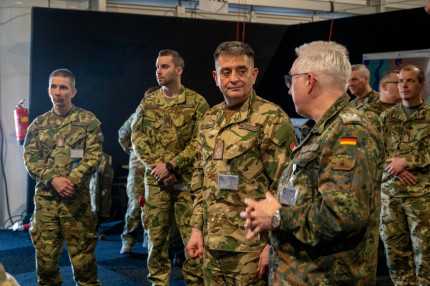
The NATO integrated air and missile defence exercise, codenamed Joint Project Optic Windmill 2025, is being held between 16 and 26 March, with the participation of 15 allied countries, including the two new member states, Finland and Sweden. It is also new that the German Air Force has involved the outstandingly effective IRIS-T SLM medium-range surface-to-air missile system in the exercise for the first time.
Systems with heavy armaments are not visible at the location in the Netherlands, neither are there aircraft taking evasive manoeuvres in the sky. However, appearances are deceptive: air defence artillerymen are working with high concentration in order to be able to defend Europe’s airspace if needed. The training is being carried out with the help of a complex virtual simulation, which hardly differs from reality from the command and control (C2) point of view. For example, with an aircraft simulator, pilots can launch air attacks against air defence forces.
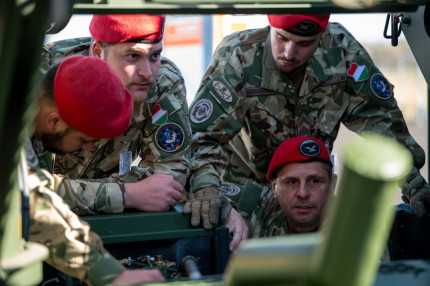
The exercise has been held every other year for nearly three decades in the Netherlands. On the previous exercise, Hungarian air defence artillerymen were only observers but this year, they joined in the task execution with their state-of-the-art equipment as active participants, as organic parts of the international community.
The backbone of the some 100-strong personnel of air defence artillerymen representing Hungary is drawn from the HDF 205th Air Defence Regiment, who are participating in the operations with a deployable Surface-to-Air Missile Operations Centre (SAMOC) and two fire units of the National Advanced Surface-to-Air Missile System (NASAMS). The HDF Air Operations Command and Control Centre has also delegated servicemembers to the Joint Force Air Component directing the exercise.
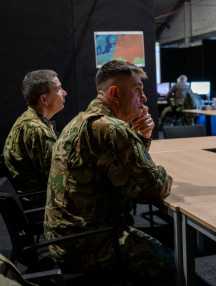
“I am proud that we not only have good military equipment but also excellent officers and NCOs, who have perfectly fitted into the international environment, actively contributed to the joint training and led their subordinate units in English, the shared work language”, declared General Dr. Gábor Böröndi, Chief of HDF Defence Staff, after being informed about the goals of the complex air defence training and the precise functioning of each exercise planning element. He said that “By participating in the exercise, we are developing the capabilities of the Hungarian Defence Forces. The deep professional environment makes possible the application and through it, the validation of weapon system-related existing concepts and procedures and those currently under development in a realistic operational environment. With the lessons learned, we can ensure that our own air defence combat-related procedures adapt to real-world deployment as closely as possible.”
After seeing the deployed equipment, as well as the SAMOC and the NASAMS crews’ simulation-supported fire control activities, the Chief of HDF Defence Staff met with the Hungarian personnel and praised their professionalism and preparedness, which they prove not only in foreign international exercises but also in Hungary, in the everyday life of their own units. He said that they are the “pioneers” of the new equipment – the commissioning and appropriate operation of which is a great responsibility – procured within the framework of the armed forces development program.
General Böröndi also highlighted that the Hungarian Defence Forces are calling motivated and patriotic youngsters to join the units equipped with new military assets during the new phase of the “Man to the Hardware!” countrywide recruitment campaign, which started in the past few days. New recruits are expected to enlist in the Győr, Székesfehérvár and Budapest garrisons, where the open positions include, among others, drill team members, infantrymen, military policemen, sensor managers, Gidran tactical vehicle driver, signaller, logisticians and garrison support officers. The general specifically underlined that the HDF find a suitable place for each applicant.
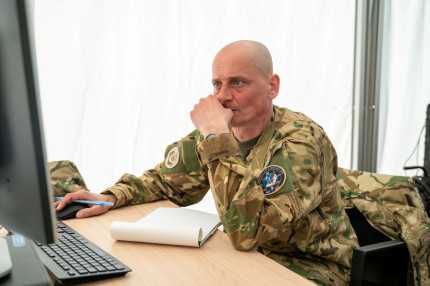
The Chief of HDF Defence Staff met with Lieutenant General Jan Renger Swillens, Commander, Royal Netherlands Army, who also visited the exercise in person. General Böröndi talked about what he had seen with high appreciation and gave thanks to the Dutch host for the time, effort and energy put into the organization and the conduct of the exercise.
Within the framework of the series of exercises Joint Project Optic Windmill, allied nations have tested, practised and developed the procedures aimed at synchronizing integrated air and missile defence every other year since 1996. In military terminology, “integrated” means that the air force, the land forces and the navy cooperate in a synchronized way to counter enemy threats – such as missiles, drones or aircraft. Ultimately, even submarines can launch guided missiles.
This year, the allied countries are facing numerous virtual and practical scenarios during the exercise, with a prominent role reserved for defeating drones. The main goal of JPOW is the integration of air defence technologies and systems, creating a “system of systems” to form protective domes over certain areas. The systems must be able to be linked in terms of software and classification as well as hardware and all air defence units must use the same language and procedures.
The Chief of HDF Defence Staff at Exercise Joint Project Optic Windmill 2025 in the Netherlands
